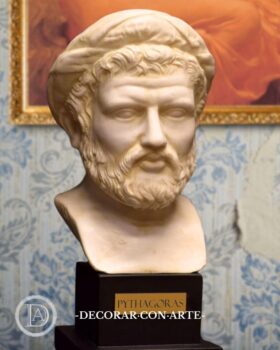Description
Mosaic “Seneca”. Reproduction of a Roman mosaic, completely handmade, using the same techniques as two thousand years ago.
Measurements:
Width: 24 cm. Height: 15 cm.
The technique used is “opus teselarium”, a mosaic of cubic stone tesserae.
Tesserae of up to 8 mm of natural stone and marble have been used in its manufacture. Fixed in mortar with a metal structure. Ready to be hung on the wall or as flooring on the floor.
Mosaic “Seneca”, reproduction of a Roman-style mosaic with the name of the philosopher Seneca.
Lucius Annaeus Seneca (4 BC-65 AD), born in 4 BC in Corduba, Hispania, was a prominent Roman philosopher, writer, and politician. His philosophical work covers topics such as ethics and morality, making him one of the most important representatives of Stoicism. Seneca actively participated in the politics of the Empire, especially as a tutor and advisor to Nero in his early years of rule, although his relationship with the emperor ended tragically.
In his writings, including essays, letters, and tragedies, Seneca’s ideas about the importance of practicing virtue, serenity, and self-mastery are reflected. Following Stoic principles, Seneca advocated for the control of passions and the acceptance of destiny and one’s own mortality to achieve serenity. In his work, he offers timeless advice on facing adversity, which Seneca himself put into practice at the time of his death in 65 AD when he was forced to commit suicide by order of Nero. His legacy endures today as a beacon of Stoic wisdom.
“True happiness is enjoying the present without depending anxiously on the future, not to have fun, either with hopes or fears, but to rest satisfied with what we have, which is enough” (Seneca)
“We are often more afraid than sorry; and we suffer more in imagination than in reality.” (Seneca)
Read more about the Stoic philosophers on our blog: Stoic Philosophers, a model of Strength and Joy



















Reviews
There are no reviews yet.